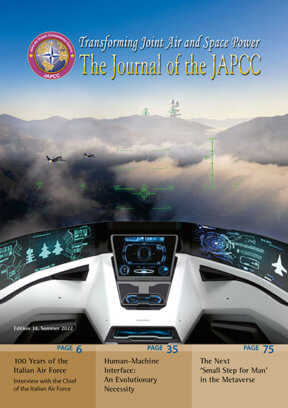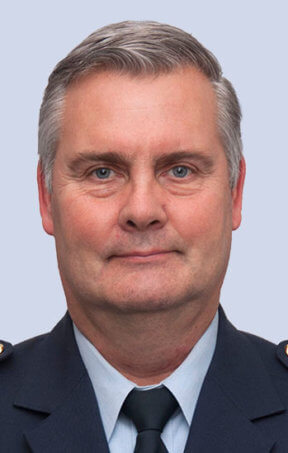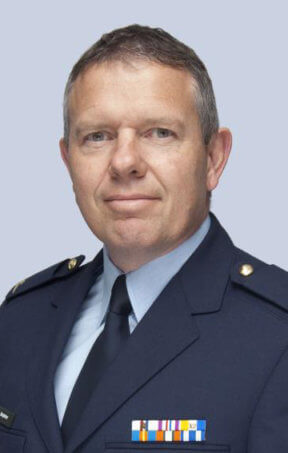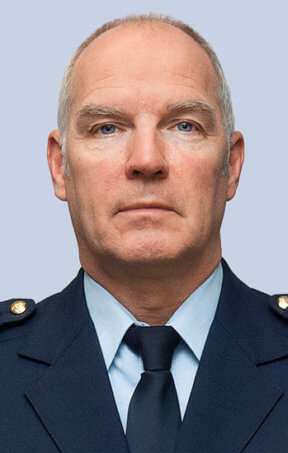Introduction
Although the conflict between Russia and Ukraine is still ongoing, with no prospect for termination of the hostilities in the foreseeable future, some initial observations can be made with respect to the air domain. These initial observations are made by the JAPCC’s Subject Matter Experts (SMEs) and are just that, not to be seen as comprehensive, all-encompassing assessments. No firm analysis can be performed yet, because of the diffuse information situation. Therefore, these observations are based solely on data collected from open sources and cannot be validated. However, we deem these observations as consequential and relevant, whilst open for further analysis once definite information becomes available. This article focuses on four areas of interest: the Russian Anti-Access/Area Denial (A2/AD) strategy, resilient basing, helicopter operations, and Space.
The Russian A2/AD Strategy
Following Russia’s annexation of the Crimean peninsula in 2014, there was renewed interest in the Russian strategy and the development of Russian military capabilities. On the one hand, there was the ‘Gerasimov doctrine’, which had been published the year before the annexation and described a new, non-linear form of warfare (the so-called ‘hybrid warfare’). On the other hand, the introduction of new weapon systems expected to enable an A2/AD strategy and give Russia a certain level of dominance over a future battlefield.
The developments above have received much attention from military strategists, scholars, and reporters. For NATO as well, the recent years have been dominated by the challenge of properly dealing with the alleged Russian hybrid and A2/AD threats, which had a real impact on exercises and training. While joint and strategic headquarters focused on countering a hybrid threat, Air Forces were trying to develop ways to bust the A2/AD bubble effectively.
However, in the current Ukraine conflict, Russia seems to fail to apply the A2/AD strategy to its full advantage. This is demonstrated by, among other things, Russia’s persistent difficulties in achieving air superiority over large parts of the battlefield. In trying to figure out the reasons behind this failure, we can certainly consider technological, organizational, operational, or logistical (economic) shortcomings.
For the time being, one can only speculate why Russia seems unable to implement an A2/AD strategy with the military capabilities at its disposal, such as long-range air defence weapons, air-launched cruise missiles, or hypersonic missiles. Firstly, from the organizational and operational sides, there seems to be a lack of cooperation and coordination between the different branches of their armed forces. For example, the Russian Air Force mostly employs its weapons from a cleared airspace outside the battlefield. This could be due to insufficient (joint) training, improper (multi-domain) planning, interoperability issues, and perhaps even mistrust between the different branches of the armed forces. In addition, the exposed communications failures, which have been widely reported in the mass media, could also be a contributing factor.
Secondly, it could be the case that Russia is trying to implement its A2/AD strategy, but is unable to dominate the battlefield due to technological and logistical shortcomings. For example, the Russian stocks of precision-guided munitions may be limited due to their high production costs and magnified by the effects of international sanctions imposed on Russian weapons manufacturers. Furthermore, modern missile defence systems seem unable to detect and eliminate targets fast enough, and the various long-range missiles do not appear to be as precise as expected.
Resilient Basing
The JAPCC is currently working on a major project looking at the issue of Resilience. The Oxford English Dictionary’s definition of ‘Resilience’ is: ‘The capacity to recover quickly from difficulties.’ The concept of the Resilient Basing project is to capture the roles and functions of any given airbase and then look at what threats and hazards may be ranged against that airbase. Analysing the roles and functions of a facility and then identifying its weaknesses will provide an insight into what aspects of any output must be made more robust to make activity more resilient against prevailing threats and hazards. This methodology can be applied to any asset irrespective of role and function, so it is in reality a joint tool.
Russia’s inability to dominate the battlefield from the outset would lead to a fight for supremacy in a contested environment. Russia does not appear to operate effectively in a contested area, resorting to the destruction of entire areas indiscriminately.
The project aims to examine the complete spectrum of conflict from Baseline Activity and Current Operations (BACO) to activity at the Maximum Level of Effort (MLE). The spectrum of threats to be explored includes both kinetic and non-kinetic threats from various actors, ranging from terrorist organizations to near-peer adversaries, while also considering hybrid threats. This, in turn, is set in the contemporary Multi-Domain Operations (MDO) environment.
This project has considerable relevance when considered in the context of the current conflict in Ukraine. No matter which side you examine, both have been impacted by the actions of the other in terms of attacks on infrastructure, which have been all the more effective given that the targeted infrastructure was lacking in Resilience. The lesson appears to be simple – nations have forgotten the ‘art of war’ or, in relation to the Air Component, we have forgotten how to operate our airbases as fighting platforms! We have lived through the epoch of so-called ‘wars of choice’ and are now being confronted once again by competition, if not yet a war, where if we fail to learn or re-learn the lessons of the past, the outcomes will change our way of life. The point is clear; our adversaries will exploit any lapse in Resilience.
As JAPCC publications have highlighted on many occasions, NATO Joint Air and Space Power is what our adversaries fear most – it is NATO’s asymmetric advantage. However, while investing in the latest platforms is essential, if we do not invest equally in their enablers and create resilient systems, then we will fail. To return to a point made in the recent JAPCC white paper ‘NATO Force Protection on a Knife Edge – A Think-Piece’, we are in grave danger of our platforms being little more than flaming piles of very expensive scrap at the end of a runway, if we do not adopt the principles of Resilient Basing.
Helicopters Operations – Missing Out on a History Lesson
Prolonged helicopter usage in Afghanistan taught us that helicopters that fly low and slow are too vulnerable to Small Arms Fire (SAF) and Man Portable Air Defence Systems (MANPADS). For this reason, helicopter operations in Afghanistan were mostly executed above 5000 ft. During the 2014 Donbas war, Ukraine lost ten helicopters (Mi-8 and Mi-24) to SAF, heavy machine guns, and MANPADS fired from the separatists’ side. This might have given them the (renewed) insight into low and slow-flying aircraft vulnerability. But also how to protect or, if necessary, destroy them.
Where many nations use the American AH-64 Apache gunship, Russia uses the Ka-52 Alligator attack helicopter as its counterpart. The Ka-52 helicopter is a formidable machine, but as recent history shows, Ukraine is not intimidated. Ukraine claims to have destroyed at least four Alligators in the early days of the war against Russia.
When the Russian invasion of Ukraine began, Russia planned first to take the capital, Kiev. Hoping to overwhelm Ukrainian defences, a group of 34 helicopters used for this invasion (on the morning of 24 February) was escorted by Ka-52 Alligator attack helicopters. The invasion did not work according to plan as the Ukrainians shot down the Alligators with heat-seeking air defence missiles and the attack was repulsed in heavy fighting. Pilots did not expect to be shot at by missiles fired from MANPADS.
The overall (under)performance of the Ka-52 must be frustrating for the Russians. Their highly rated gunship is falling victim to shoulder-fired missiles. However, they should have known, taking into account the difficulties encountered against insurgent-fired Stinger missiles during the Soviet war in Afghanistan. A missed history lesson.
Space Domain-Related Considerations
During the initial stages of the conflict in Ukraine, how events unfolded in the Space domain was a vital aspect, which has also affected the way the conflict is currently unfolding. Three items stood out, the cooperation between Russia and the international community with the purchase of the Soyuz rockets, the limited denial of the electromagnetic spectrum by Russian forces, and the commercial space industry stepping into the fray to augment Ukrainian forces.
In the early stages of the conflict, the majority of the international community spoke out against the invasion of Ukraine, specifically the United States, the European Union, and the United Kingdom. These countries, among others, are partners within the International Space Station (ISS) and regularly use Russian Soyuz rockets for their space programmes. Due to the diplomatic outrage, Russia responded by declaring that any nation that spoke out against the conflict would no longer be able to purchase Soyuz rockets. This has far-reaching consequences for emerging Space programmes as they rely on the Soyuz rockets to place satellites into orbit. As a result of this threat, the aviation and space industry has already made proposals for Soyuz replacement.
It was widely anticipated that Russia would dominate the electromagnetic spectrum by actively denying the Ukrainian defence’s GPS and voice communications usage. As the conflict progressed, it became evident that Russia was hesitant to employ its electronic countermeasure capabilities as they were unable to operate their own forces. In fact, many frontline reports suggested that Russian forces were commandeering cell phones from Ukrainian civilians to conduct operations. This was a massive unforeseen benefit to the Ukraine defence, as it enabled listening and tracking of their communications.
Lastly, the impact of the commercial space industry cannot be understated. A Ukrainian official requested via Twitter to Elon Musk for access to his Starlink Communication system. Within hours, Elon Musk reconfigured his system, and within a couple of days, truckloads of Starlink equipment arrived in the country. When reports of Russia’s interference surfaced, Elon Musk developed a software update within days that eliminated the interference. The Starlink system has been a crucial tool for Ukrainian defence. In addition to the communication assets, the Intelligence, Surveillance, and Reconnaissance (ISR) community stepped up its support by delivering high-resolution intelligence to the Ukrainian defence forces, thus enabling constant visibility of Russian troop postures.
These observations are based on open source information, should not be considered definitive, can serve as the basis for further analysis and evaluation.















